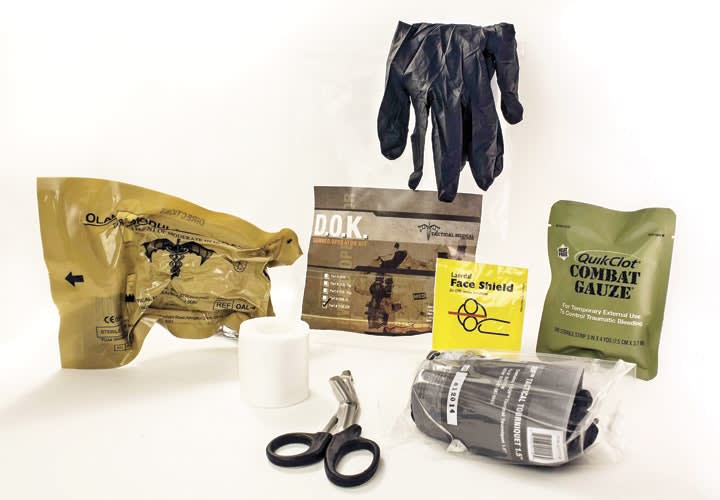Burns was hit. One round was stopped by his vest, a second cut through his shoulder, and a third punched into his leg. He was bleeding heavily.
Officer Joshua Burns might have bled out and died if it wasn't for a new emergency medical program that the Dallas PD had implemented just weeks before he was shot. As part of that program, 3,200 Dallas officers had been trained in basic hemorrhage control techniques and issued Tactical Medical Solutions' Downed Officer Kit (DOK).
The DOK is a sealed 7x7x3-inch kit that contains a Special Operation Forces Tourniquet (SOF-T), QuikClot Combat Gauze, an OLAES modular bandage, nitrile gloves, a face shield, trauma shears, and medical tape.
To check the hemorrhages that could have killed Burns, his fellow officers used the QuikClot-impregnated gauze and the SOF-T tourniquet. Burns was then transported to a hospital. He survived his wounds.
Medical professionals are cautious about saying that the actions of his fellow officers saved Burns' life, but they believe it was certainly a factor. "When a patient has bad outcomes most of that is from unchecked hemorrhaging," Dallas PD Lt. Alex Eastman said at a press conference following the shooting.












